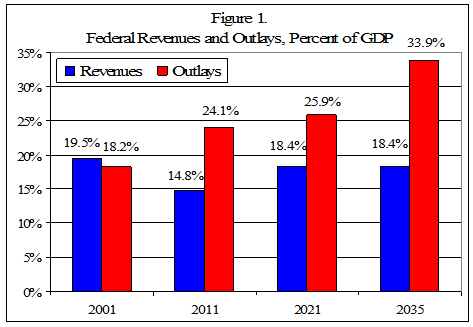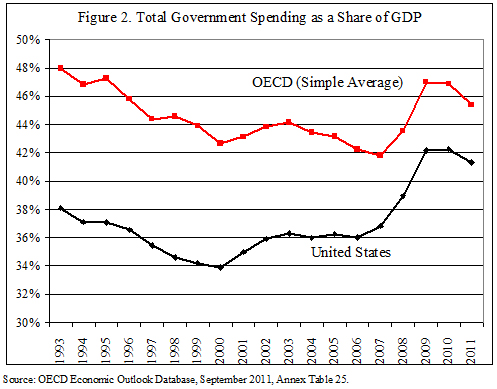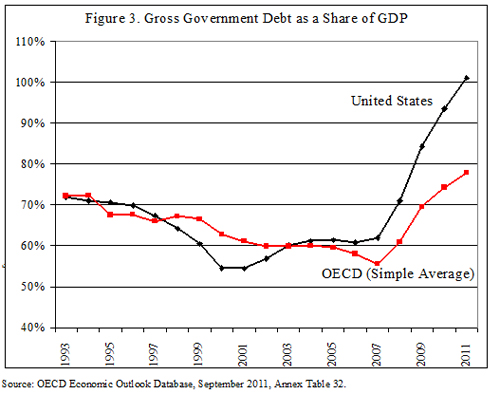September 22, 2011
Chris Edwards testified to Congress’s Joint Economic Committee this week on the damaging rise in federal spending and debt (his written testimony is here). The following are a few key points:
- Projections from the Congressional Budget Office show that without reforms spending and debt will keep on rising for decades to come. Under the CBO’s “alternative fiscal scenario,” spending will grow to about 34 percent of GDP by 2035, as shown in Figure 1, and debt held by the public will increase to at least 187 percent of GDP.

- Some analysts say that America can afford to increase taxes and spending because it is a uniquely small-government country. Alas, that is no longer the case. Figure 2 shows that government in the United States used to be about 10 percentage points of GDP smaller than the average government in the Organization for Economic Cooperation and Development (OECD). But that size advantage has fallen to just 4 percentage points. A few high-income nations — such as Australia — now have smaller governments and much lower government debt than the United States.

- American government debt has also soared to abnormally high levels. Figure 3 shows OECD data for gross government debt as a share of GDP. (The data include debt for federal, state, and local governments). In 2011, gross government debt is 101 percent of GDP in the United States, substantially above the OECD average of 78 percent.

- Federal spending is soaring, and government debt is piling up at more than a trillion dollars a year. Official projections show rivers of red ink for years to come unless policymakers enact major budget reforms. Unless spending and deficits are cut, the United States is headed for economic ruin as growth falls and rising debt threatens further financial crises. Policymakers should turn their full attention to long-run spending reforms. They should begin terminating the many unneeded and damaging federal programs that draw resources out of the private sector and sap the economy’s strength. Programs often create economic distortions, damage the environment, restrict individual freedom, or have high levels of fraud and abuse.
Themes: